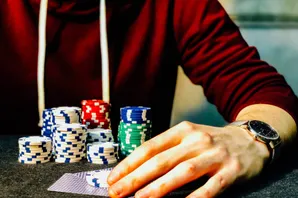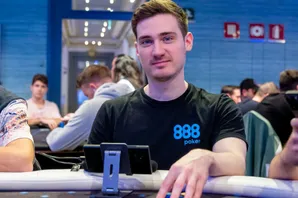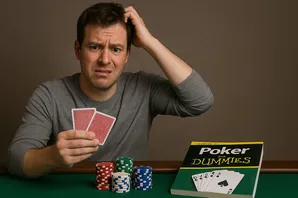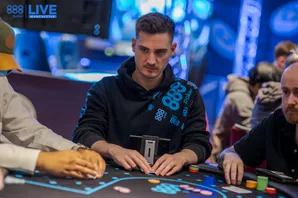
We need to take a step back and reflect on a key concept: you’re not like the average poker player you encounter at the tables. How do I know? Because you’re reading a poker strategy article. Most poker players, by contrast, don’t delve into strategy—they simply play poker. There’s no harm in that. It’s akin to me enjoying fly-fishing without ever reading detailed guides on it. I do okay, catch a fish now and then, and have fun doing it.
But here’s the difference: by reading poker strategy, you’re already on a different level. The lessons from these resources, like “you need to fold a lot,” are crucial. Even experienced players who actively read strategy material often struggle with folding as much as they should. So if you’re not folding enough, just imagine how much less your opponents are folding—most of them don’t have access to the same strategic insights.
Now, returning to the concept of targeting. In the previous article, I mentioned a scenario where you and I discussed a betting decision together. One of the questions I asked was, “What worse hands will call if you bet?” That’s a key part of thinking through your betting strategy. But there’s a deeper layer to this, which I’ll explain through an example:
Let’s say you raised A♦️T♦️ from the hijack and the villain called from middle position. The flop comes A♠9♣4♠. They check, you bet, they call. The turn brings the 2♦️, and after they check again, you bet, and they call once more. Finally, the river is the 7❤️, and they check a third time.
You ask me: “I want to bet, but what worse hands are going to call?”
Here’s my response: “Make that their problem.”
What I mean is that, just like you or I might fold hands like A8, A6, T9, or 98 to three streets of aggression, the villain might still call with these hands. And in the average $1/3 or $2/5 NLHE game, they very well might.
Now, you’re concerned that the villain might be holding busted flush draws, AQ, or AJ, and you might end up value-owning yourself. In poker, “value-owning” refers to a scenario where you make a value bet in a situation where you could have checked back, but end up getting called by a better hand.
Sure, you could value-own yourself against AJ, but in this case, the villain checked. People hate folding pairs, especially top pairs. So let them worry about what hands they can call with. If they fold their busted flush draws, great—because you still get value from the hands that do call.
The key here is that your bet is forcing the villain to deal with the situation. They now have to think: “What if this player is bluffing me? What if they have a better hand than mine?” It’s all about putting them in a position where they feel uncertain, while you get value from the hands that are still in play.
Targeting vs. Trusting Your Opponent
Typically, you should be thinking about your target when betting or raising, especially when bluffing. You need to anticipate the types of hands that are likely to call your value bets and which hands you expect to fold when you’re bluffing. But don’t forget: most players aren’t like you—they call too much. So if you’re unsure about what hands the villain might call with, sometimes it’s better to simply put out a bet and let them worry about their range.
Two Final Thoughts:
-
Value-Own Yourself Occasionally: Yes, it will happen. But don’t feel bad about it. If you never value-own yourself, you’re likely not value-betting enough on the river. The goal is to make sure you’re betting for value in the right situations—even if you occasionally make a mistake.
-
Think Twice About Bluffing: If your opponents have a hard time folding, this should make you more cautious when bluffing. You need to have a clear idea of which hands you expect to fold when you bluff. Don’t try bluffing a top pair, because that’s not going to work often enough to make it worth your time.











